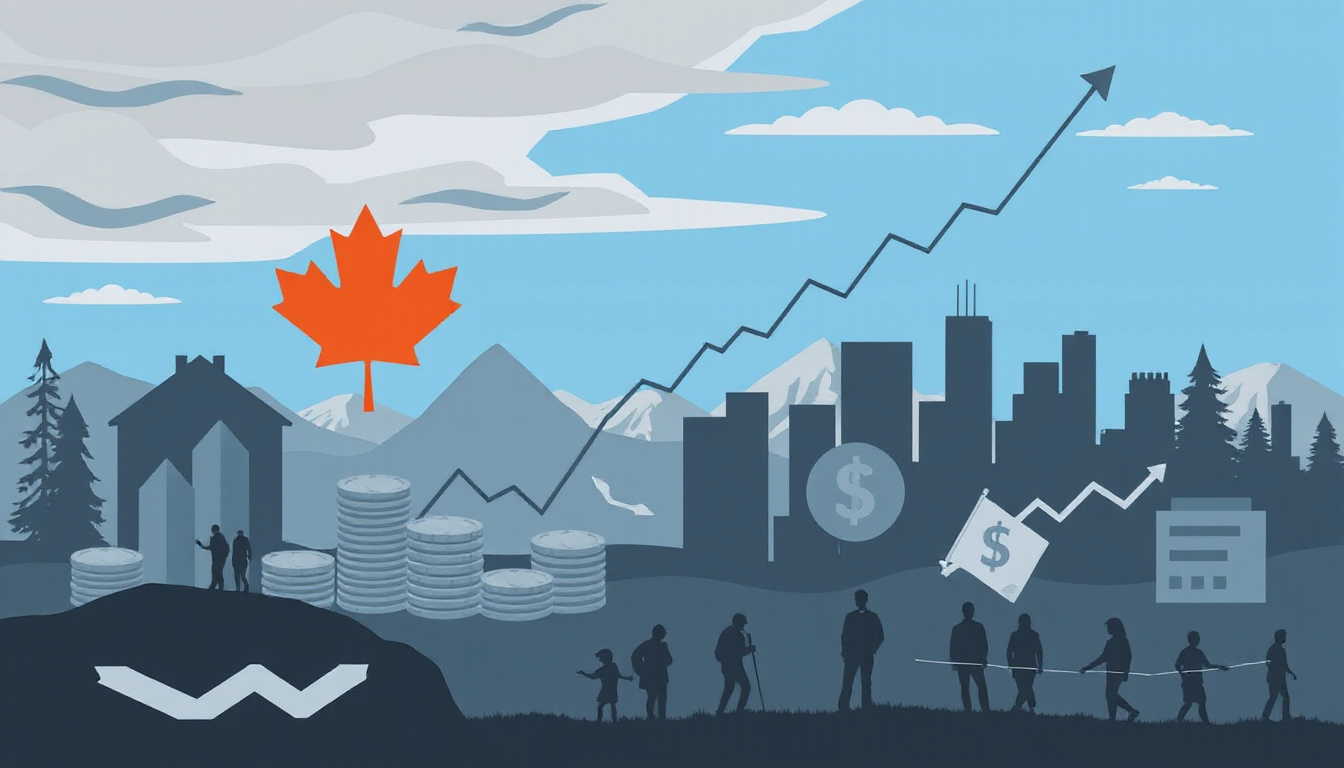In recent years, Canadian debt trends have shown a substantial increase, with approximately 82% of Canadian households carrying some form of debt as of
2023. This statistic underscores a significant shift in financial practices over the past decades, raising concerns about financial stability and consumer behavior across the nation. Understanding the historical context of these debt trends is crucial for analyzing their current state and predicting future implications for the Canadian economy. This blog will explore the evolution of debt levels in Canada, highlight the key factors influencing these trends, and discuss the potential implications for individuals and policymakers alike.

Key Takeaways
- Canadian debt has evolved significantly over the years, shaped by economic events and policy decisions.
- Current trends indicate a rising level of debt among Canadians, influenced by factors like low interest rates and economic uncertainties.
- Key drivers of Canadian debt trends include consumer behavior, government spending, and global economic conditions.
- Future implications of rising debt levels could impact Canada’s economic stability and policy direction.
- Understanding these trends is essential for Canadians to make informed financial decisions and for policymakers to address potential economic challenges.
Understanding the Historical Context of Canadian Debt
In Canada, the trends in debt have seen significant changes over the decades, reflecting various economic conditions and shifts in consumer behavior. In recent years, data shows that approximately 77% of Canadian households were in debt as of 2023, indicating a steady increase from about 70% in
2010. The rise in household debt can be attributed to factors such as rising housing prices, increased consumer spending, and a low-interest-rate environment that encourages borrowing. Furthermore, Statistics Canada reports that the total household debt reached nearly $2.3 trillion in early 2023, emphasizing the growing reliance on credit among Canadians. Understanding these historical trends is crucial for both policymakers and individuals as the country navigates economic challenges and seeks sustainable financial solutions.
Current Trends in Canadian Debt Levels
In recent years, Canadian debt trends over time have shown a significant and concerning upward trajectory. As of 2023, approximately 75% of Canadian households are in debt, a slight increase from 73% in 2020, according to the latest statistics from Statistics Canada. This rise in household debt can be attributed to several factors, including rising housing prices, increased consumer spending, and broader economic pressures. Additionally, the average debt-to-income ratio for Canadians reached an alarming 175%, meaning that Canadians owe, on average, $
1.75 for every dollar they earn. This trend highlights the growing financial strain on Canadians and raises questions about long-term economic sustainability as interest rates continue to fluctuate. Such statistics are critical for understanding the evolving landscape of personal finance in Canada and can serve as a vital reference for those looking to explore the effects of debt on economic well-being.
‘Debt is the slavery of the free.’ – Publilius Syrus

Factors Influencing Canadian Debt Trends
As of 2023, Canadian debt trends over time reveal a significant shift in household financial behavior. Approximately 76% of Canadian households reported carrying some form of debt, a notable increase from previous years. This rise can largely be attributed to factors such as rising housing prices, increased consumer spending, and the growing costs of living. According to Statistics Canada, the average household debt-to-income ratio reached an alarming
174.6% in the first quarter of 2023, highlighting the ongoing challenge of managing debt in an ever-evolving economic landscape. Furthermore, the Bank of Canada has indicated that interest rates are expected to remain high in the near term, further complicating the debt situation for many families across the country. With these statistics in mind, understanding the evolving landscape of Canadian debt is essential for both policymakers and consumers as they navigate financial decisions in a challenging environment.
Future Implications of Debt Trends for Canada
As of 2023, Canadian debt trends over time show that approximately 75% of Canadians carry some form of debt, up from 71% in 2020, according to a recent report by Equifax Canada. This increase highlights a concerning pattern where an ever-growing portion of the population is becoming increasingly reliant on credit options, often leading to financial strain. Experts predict that by 2025, household debt in Canada could reach an average of over $80,000, driven by rising costs of living and more consumers utilizing credit cards and loans to manage their expenses. Given these trends, understanding the implications of accumulated debt is critical for Canadian households as they navigate their financial futures. It is essential for families to prioritize debt management strategies and consider relief options to mitigate the potential risks posed by these escalating debt levels.
